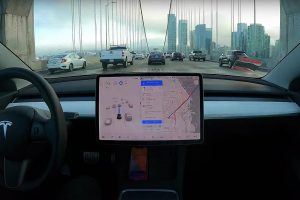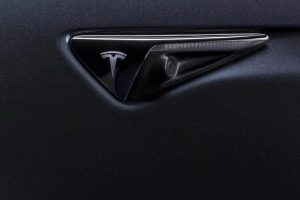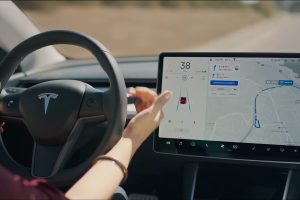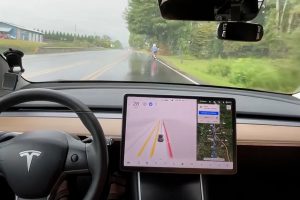Tesla owners clubs are valuable resources, helping current owners get the most out of their vehicles, and bringing new buyers into the electric fold. The largest Tesla owners club in North America is Tesla Owners of Silicon Valley, which has over 2,000 members, and 64,000 Twitter followers.
At the moment, most of the club’s activities are virtual—they include happy hours, meet-ups with luminaries of the Tesla world, and destination drives to scenic locales. The club also organizes events for Earth Day, National Drive Electric Week, and at car shows, where Tesla owners show off their vehicles and spread the word about driving electric. It’s not just an enthusiast group, but also an activist group, dedicated to advancing the cause of vehicle electrification and clean energy.
“To help the transition to sustainable energy, that’s our goal,” club founder John Stringer told me during a recent chat. “We are a non-profit, and we’re stepping into the next phase of standing this club up. Our club is here to enable the Tesla community to grow, and to get to know other people.”
John Stringer is also one of the beta testers for Tesla’s Full Self Driving (FSD) package, so he’s privy to a lot of inside information about one of the most highly-anticipated products in the automotive world. The beta-testing program is naturally pretty hush-hush, but John was able to tell me a number of interesting things without revealing any classified info.
Tesla’s vehicles have gradually evolved more and more self-driving features. Elon Musk outlined a plan to produce an autonomous car in September 2013, just about a year after Model S first hit the streets. Tesla introduced the hardware that enables Autopilot in late 2014, as part of the D package, and began offering Autopilot as an option in October 2014. Since then, the company has introduced a raft of new features, including Traffic Aware Cruise Control, Highway Autosteer and Parallel Autopark, via over-the-air software updates. The latest iteration of Tesla’s autonomy package is the recently-released FSD version 8.1.
Since the beginning, Tesla has maintained an army of customer beta testers, who continually generate data on how the various Autopilot features work. It uses this information to refine features and devise new ones. As with any corporate beta-testing program, the inner workings are top secret. However, some participants in FSD Beta, a category of Tesla’s Early Access program, are allowed to release selected videos demonstrating the latest FSD features.
“The Early Access program was kind of like Fight Club,” says Stringer. “If you were part of it, you can’t talk about it. FSD Beta was the first time that you could be a part of Early Access and talk about it. There is a very select group of people who can share versus the people who actually have access.”
Elon Musk revealed on Tesla’s recent earnings call that there are some 1,000 testers in the program—more than most people imagined—but only a fraction of these are authorized to discuss their experiences and to share videos.
The hardware that enables Tesla’s autonomy features has gone through three major iterations. Tesla’s Hardware 3 package, which came out in April of 2019, is required for FSD, while the previous Hardware 2 package allows more limited autonomy features. Models S and X, even the oldest ones, can now be upgraded to Hardware 2 at a price of around $1,500 (although certain features, such as Sentry Mode, can’t be enabled on older vehicles that lack cameras). Owners of vehicles that came with the Hardware 2 package can upgrade to Hardware 3.
As the media never tires of reminding us, the road to full autonomy has been a long one, and predicted dates have been pushed back again and again (not only by Tesla, but by just about everyone who ever made a prediction). I asked John why autonomy is taking so much longer than expected. He believes the main reason is simply that it turned out to be more complex than anyone realized in the early days.
“All 8 cameras on my Model X are identifying what things are in real time, like curbs, medians, stoplights, other cars, pedestrians,” says John. “What’s the pedestrian going to do? Four or five years ago, Elon may not have [realized] that he needed Hardware 3 to get there, but ultimately, I think it’s just [that] the reality of bringing this to market was more complicated than originally expected.” This of course applies to everyone in the industry, not just Tesla. “Look at Waymo—they’re only [operating] in Mountain View and now, Arizona. We have beta testers in Michigan, Ohio, Florida, I think even New York. And that’s what’s so cool about Tesla compared to all the competition—it’s not geospecific, it can go anywhere in the US.”
Full self-driving may not be arriving as quickly as many drivers (and investors) would like, but by all accounts, Tesla is making steady progress. John got FSD version 8.1 in October, and since then, there have been 11 updates. “It’s only gotten better, and it can pretty much do a little bit of everything. There are more and more rides I’ve taken without any disengagements, and I post a lot of these videos on my YouTube channel. I did a mountainous drive the other day, and FSD can handle situations where it’s a one-lane road, and a car’s coming. It’ll figure out what to do—it’ll pull over to the side to let them go around, or it’ll go around. Pedestrians and bikers, it tries to figure out what they’re going to do, and it plays very cautious. Like if I see you at a stop sign, and you come to the very tip of the curb, it will probably assume you want to walk, and it will give you the right of way.”
“We had an instance where one of our buddies actually jumped in front of the car, and it stopped. It can do roundabouts. It can pretty much do everything in a suburban area. It can handle everything I need it to do. All the errands I do, I typically never have any problems.”
It sounds like John is saying it’s getting very, very close. “Yeah! I would say so. But the one thing is, as Elon said, FSD has to be 10 times better than a human driver, and the one thing that could delay it is the edge case of that one percent. If there’s, let’s say, 500,000 FSD owners in the US, and you release it to them, that one percent could make a difference.”
How perfect does it have to be before it’s ready for release? “Tesla’s going to make their own decision, and thankfully, I’m not the one that decides. What I do know is the way that they’re rolling it out, it won’t matter what area you’re in. One limitation: it’s not great in really bad visibility situations like crazy snowstorms, or horrible rain. When Tesla does release FSD, they need to be very specific on what it is, and what it’s not.”
Could the system itself decide when it’s not safe to use, for example, deactivating FSD in the case of extreme weather conditions? “I think so, yeah.”
The auto industry appears to be moving to a model akin to that which characterizes smartphones and other tech products—a product isn’t just a piece of hardware, but rather a hardware/software stack, and the companies providing the software components (or both hardware and software, like Apple) are having most of the fun (and profit). I asked John if he thinks that’s the way the industry is headed. “This is why I hope you own TSLA stock,” he replied. “The most exciting thing about what Tesla’s doing is the software, and that is why they are now worth more than Facebook. It’s because they are selling transportation as a service, they are selling software. So, yes, without a shadow of a doubt, that is the future, and companies that continue not to do that will die. It’s clear.”
“Some automakers are still saying you have to come in to the dealership to do a software update. Things like that are so backwards. If you think of any hardware business, the margins are horrible. Software is where you make all the money, and that’s the model that Tesla is in. Some of the software you can get today: FSD; acceleration boosts; premium connectivity (for $10 a month). More software upgrades are the future. Imagine the Tesla App Store. Let’s say you want to put an app out for Tesla, and you charge everyone $2. Tesla’s getting a percentage of that. And this is why Tesla is worth more than all the other car companies combined. Tesla is the Apple of the car industry, but the difference is, this product is even more disruptive than the iPhone was.”
“There’s no company that’s doing that today, other than Tesla. I met [auto manufacturing expert] Sandy Munro on Monday, and he told me two things that are going to kill the old auto companies: MBAs and lawyers. That’s what these other companies are stuck on—they’re not taking risks, because the MBAs and lawyers are telling them no, don’t do that. But if you’re not…for example it’s crazy that Tesla released a software update so you can summon the car from the parking lot to the front of a store. If they went about that by going to the regulators to get it approved, we probably wouldn’t have it today. They just released it. But if you’re Ford, you’re probably going to go through all those things.”
Once Tesla does deem FSD ready for a widespread rollout, John thinks that self-driving robotaxis will follow within a year or two, perhaps with human monitors riding along at first for added safety. However, even with his intimate knowledge of the FSD program, he won’t hazard a guess as to when the system will be ready for prime time, much less how long it will take for self-driving cars to replace human drivers altogether.
When that day comes, there’s no question that it will transform our society, and John sees a lot of positive changes in store. “More lives saved, better for the environment, less people on the road commuting, so less traffic congestion.”
One thing about autonomy that many don’t consider: it reduces the stress of driving. John commutes about 70 miles per day. “Now, using Navigate on Autopilot, 95% of my commute is taken care of by the computer. I’m less stressed when I get home, I have more attention to my kids because of it, the monotony of the stop-and-go is completely gone. Two hours [of driving] a day is now actually somewhat enjoyable. That’s kind of life-changing.”
Original Publication by Charles Morris at EVANNEX.
Ready to join Tesla’s Mission to accelerate the world’s transition to sustainable energy? Feel free to use my referral code to get some free Supercharging miles with your purchase: http://ts.la/guanyu3423
You can also get a $100 discount on Tesla Solar with that code.





